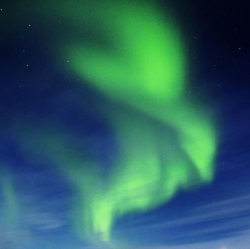
Landing on a comet, nuclear fusion with lasers and a tractor beam are among the 10 physics breakthroughs of 2014, as chosen by a leading science magazine. The Philae spacecraft’s touchdown on comet 67P was named as the year’s most significant advance by Physics World. It was singled out for its "fundamental importance to space science".
The first detection of neutrino particles from the main reaction that powers the Sun and a new holographic memory device also made the shortlist. Dr Hamish Johnston, editor of physicsworld.com, said: "As well as looking forward to the fascinating science… we also acknowledge the technological tour de force of chasing a comet for 10 years and then placing an advanced laboratory on its surface."
In no particular order, the nine other breakthroughs chosen by Physics World are:
Light on the cosmic web (January): Researchers used the radiation emitted by a quasar as a "cosmic flashlight" to illuminate the hidden tendrils of dark matter that underlie the visible Universe.
Neutrinos from the Sun (August): The Borexino experiment in Italy detected neutrino particles from the main nuclear reaction that powers the Sun. The number of neutrinos it saw agrees with theories, suggesting we do understand what’s going on inside our parent star.
Laser fusion milestone (February): Scientists at the National Ignition Facility (NIF) in California made a breakthrough in the long road to self-sustaining fusion when they managed to get more energy out of fusion reactions than was deposited in the fuel by NIF’s powerful laser.
Acoustic tractor beam (May): Once the preserve of science fiction, tractor beams are now a reality – at least in the lab. Physicists built a device that can pull objects by firing sound waves at them. The beam could have medical uses, such as manipulating objects within the body.
Supernovas in the lab (June): The Vulcan Laser Facility in Oxfordshire was used to recreate miniature star explosions, offering a window into some of the most powerful and unpredictable events in the cosmos.
Electron magnetism (June): Researchers in Israel were the first to measure the extremely weak magnetic interaction between two separate electron particles.
A better fibre for images (March): Scientists in the US used a physical effect called Anderson Localisation to develop a better optical fibre for transmitting images.
Holographic memory (February): American and Russian physicists built a new type of holographic memory device that stores data in the form of magnetic "bits".
Quantum compression (September): The ability to compress quantum information was demonstrated for the first time by physicists in Canada and Japan.
